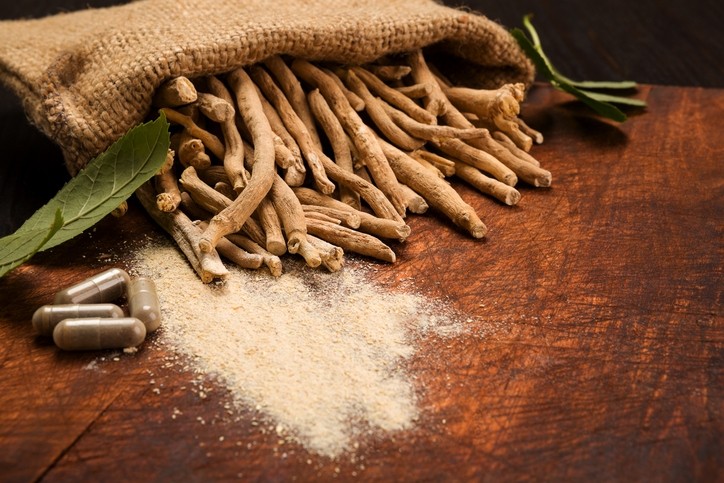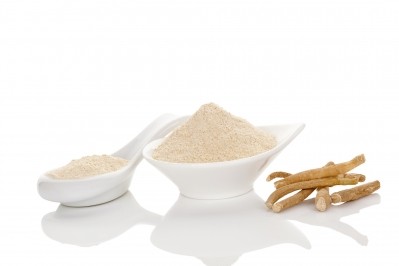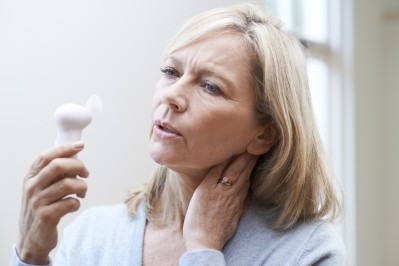Ashwagandha finds itself in the right place at the right time

Pandemic inflates market
“When COVID-19 was declared a pandemic, we immediately saw an increase in orders for immune support herbs, but shortly after that demand for adaptogens grew as heightened stress levels became apparent. Adaptogens address the link between stress and immune function, so that made a lot of sense. Sabinsa’s Shagandha Ashwagandha Root Extract is one of our biggest selling adaptogens right now, but we’re also seeing demand for tulsi as well,” said Shaheen Majeed, president worldwide of Sabinsa Corp. Sabinsa is based in Bangalore but has significant operations in Hyderabad, and in New Jersey and Utah.
Bruce Brown, CEO of Natreon, which supplies the branded Sensoril ashwagandha root and leaf extract, said interest for his company’s product and all ashwagandha products had been steadily ramping up even before the pandemic hit. Natreon is based in New Jersey and has an R&D center in Kolkata, India.
“There had been strong double digit growth before the pandemic,” Brown said.
“Now we have seen a 50% to 75% growth in new projects from customers involving Sensoril. This is from both existing customers and new customers,” he said.
Kartikeya Baldwa, CEO of Ixoreal, which manufactures an ashwaganda extract branded as KSM 66, said the growth in sales of his company’s product has been greater than anything he’s ever seen.
“Our sales are up by about 280% since the beginning of the pandemic,” Baldwa said.
But, like other suppliers, he said interest in the herb had been rising even before the current crisis. KSM 66 is manufactured in company-owned plants around its headquarters in Hyderabad, India, but almost all of the product is exported to the US and other countries, Baldwa said.
“We already had products on mainstream aisles. We had products in Walmart and Costco, and we had customers like Reckitt Benckiser and Nestlé,” he said.
Internal Indian demand driving raw material price spikes
This demand has put unprecedented pressure on the supply of ashwagandha, Baldwa said. This has been exacerbated by a new quirk of the international market. While ashwagandha arose out of the Ayurvedic tradition that goes back thousands of years in India, Baldwa said until recently products made along these lines were much less popular there than outsiders might have assumed.
“Ayurveda was a folk medicine. You might take something when your were sick because your mother or your grandmother gave it to you. Or you might visit an Ayurvedic doctor if you felt ill and take something they had prescribed for you,” he said.
Now that has changed in a big way, Baldwa said. The Indian government has lined up some large scale observational trials for Ayurvedic herbs to investigate their potential prophylactic properties with regard to COVID-19. Baldwa said he was a member of the expert panel that helped select which herbs to test, a list that included ashwagandha. He said his company has donated supplies of KSM 66 for the trial.
“They are going to give these herbs to frontline workers like health care workers,” Baldwa said. “It will be a big trial, maybe as many as 100,000 participants.”
As a result of the publicity surrounding the trials as well as other government communications, Baldwa said the average Indian consumer is now looking at Ayurvedic products as something to incorporate into their daily lives, not just as an occasional folk remedy. That has sent raw material prices through the roof, he said.
“Every second or third Indian now consumes ashwagandha. Roots that were selling for about $3.50 a kilo now cost more than $8 a kilo,” he said. Baldwa said his company anticipated the supply shortages and now has about 14 months worth of raw material on hand and so has been insulated to some extent from the price increases.
Adulteration fears
Sabinsa’s Majeed echoed the concerns of Baldwa and some others in the industry that the current situation could lead to increased evidence of adulteration with lower quality material or with other botanical substances altogether.
“There is concern across the supply chain about the sudden increase in demand for this and other botanicals. For the past six months the industry has been talking a lot about how to guard against adulterated or poor-quality herbs, including ashwagandha. Working with reputable suppliers and conducting the right tests should be priorities for any ingredient buyer today,” he said.
Durable demand
Natreon’s Brown said he believes that the demand for ashwagandha ingredients will continue at a heightened level even after the current pandemic passes. In that new market climate, being an established player will help, he said.
“Sensoril was one of the first ashwagandha products on the market, dating back to 2002, and we have always used the roots and the leaves because we thought that is the best way to get the benefits of this plant,” he said.
(As an aside, there is vigorous disagreement about whether ashwagandha products can include other plant parts or should be made only from the roots. To Natreon’s credit, Sensoril has always been labeled as an ‘ashwagandha root and leaf extract.’)
“We have 14 clinical studies behind our product. When you talk to some major brands having that kind of evidence of quality, safety and efficacy is important. That’s why we have our product in brands like Nature’s Way, Schwabe and others,” he said.
“The multiple conditions ashwagandha has traditionally been used for by Ayurvedic practitioners includes alleviating anxiety and depression, and if there was ever a time when most people need that support, it’s now,” said Majeed.
“Shagandha has been investigated for its anxiolytic and anti-depressant activity in height induced anxiety and dark-induced depression animal models. The administration of Shagandha (at the dose of 10 mg/kg, 20 mg/kg, and 40 mg/kg) for 14 days, resulted in the reduction of anxiety and depression. Shagandha at 20mg/kg was found to be highly effective in reducing anxiety with protection level better than the standard antidepressant drug diazepam in the despair swim test (Monika et al., 2020),” he added.
Increased production capacity
Baldwa said Ixoreal is betting on continued high demand, too. The company was fortunate to be able to put its third manufacturing plant in Hyderabad into full scale production just before the pandemic hit there. All of its plants are operating at maximum capacity, he said.
“We have doubled the salary of our factory workers to help keep them motivated,” he said.
In addition, Baldwa said a fourth plant is coming online. The disruption caused by the virus will put the opening back a bit, but he said the company expects to have it up and running by November.
“The last two or three years were phenomenal for us in the US. I believe this will be a glorious time for Ayurveda going forward,” he said.
















